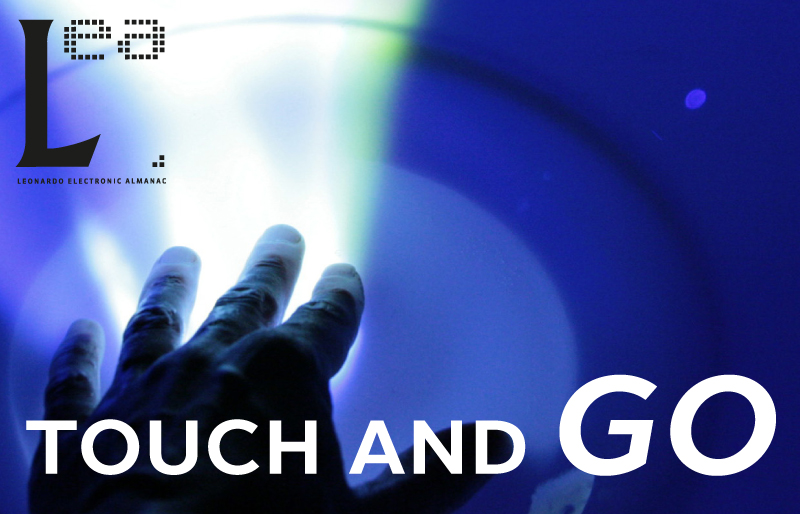
LEA Volume 18 Issue 3
Volume Editors: Lanfranco Aceti, Janis Jefferies, Irini Papadimitriou
Editors: Jonathan Munro and Özden Şahin
ISBN: 978-1-906897-18-5
ISSN: 1071-4391
Reference: Judson Wright, “Interaction’s Role as Catalyst of Synthesized Intelligence in Art,” eds. Lanfranco Aceti, Janis Jefferies and Irini Papadimitriou, Leonardo Electronic Almanac (Touch and Go) 18, no. 3 (2012): 190-199.
Interaction’s Role as Catalyst of Synthesized Intelligence in Art
by Judson Wright
The psychological role of interactivity was studied as the first computing machines were being built in the 1950’s. However, attention was quickly detoured to other aspects of the exciting new technology. A subtle shift occurred from JCR Licklider’s psychology-based “Man-Machine Symbiosis” perspective to Doug Engelbart’s “wow factor”-based interface design a few years later. In the former paradigm, interactivity is employed, by the programmer(s)/engineer(s), in the service of integrating meaning, by the user, with the necessarily chaotic data of the computer. Meaningful output is therefore a result of the combination of human behavior and that of the computer. In the latter, interactivity is a means by which the computer can be employed intuitively, originally as an alternative to explicit command-line-type instructions, assumes the software will supply the desired meaningfulness. The underlying strategy of this scheme is that the computer be as inconspicuous as say, a hearing aid or contact lenses, and not detract attention from the output (as an object).
While meaning is often essential to the goal in both cases, the underlying assumption of a Platonist view, that there exists an object – a concrete yet physically inaccessible entity – is plainly dualistic. Dualism states the mind and body are distinct in that, while the body is subject to physical laws and directly detectible in physical ways, the mind is not. Yet somehow, the mind appears to exert some control over the body, by sending object-messages. This perspective is taken further to describe a model where computer output is seen as a final product (an object) of the program, the interaction being a means to this end. Though dualism has long been shunned by hard science, it has hardly been evicted from the deeper roots of scientific thought.
The Lickliderian approach takes more of a constructivist view of conceptualization, which we will address further. Constructivism is mainly entertained in educational theory and has never been discussed much at all in computer science. However, it is extremely relevant to issues such as Artificial Intelligence, and certainly the role of interactivity in computation. While these philosophies may be enlightening, we do not favor either abstraction, but do believe that both yield important concrete results, within appropriate tasks, each being useful in very distinct fields. However, in this essay we will focus on the Lickliderian approach. By engaged involvement in exploration of the physical environment, one also undergoes engagement in the neural processes of synaptic construction. Inter activity can and often does play an integral role in ‘discovering’ meaning. Better understanding of this role is essential to efficient and more effective use of computation.
Full article is available for download as a pdf here.
The artworks in the article are © Judson Wright.
Vol 18 Issue 3 of Leonardo Electronic Almanac (LEA) is published on line as a free PDF but will also be rolled out as Amazon Print on Demand and will be available on iTunes, iPad, Kindle and other e-publishing outlets.
